I was fortunate enough to be able to attend this years Game Developer Conference (GDC). Whilst there I had the pleasure of attending its Game Design Workshop.

The Game Design Workshop took place over two days. Both days included a general session, and an elective. I attended both Day 1 & Day 2. The following is a brief account of the experience. If you are an aspiring designer, and have the opportunity to attend the workshop this is a must do event!
Day 1
SiSSYFiGHT
On the workshops first day we played SiSSYFiGHT. After playing a few rounds, we were asked to come up with a new theme for the game. This involved each team member writing sticky notes, grouping them then voting on a theme.
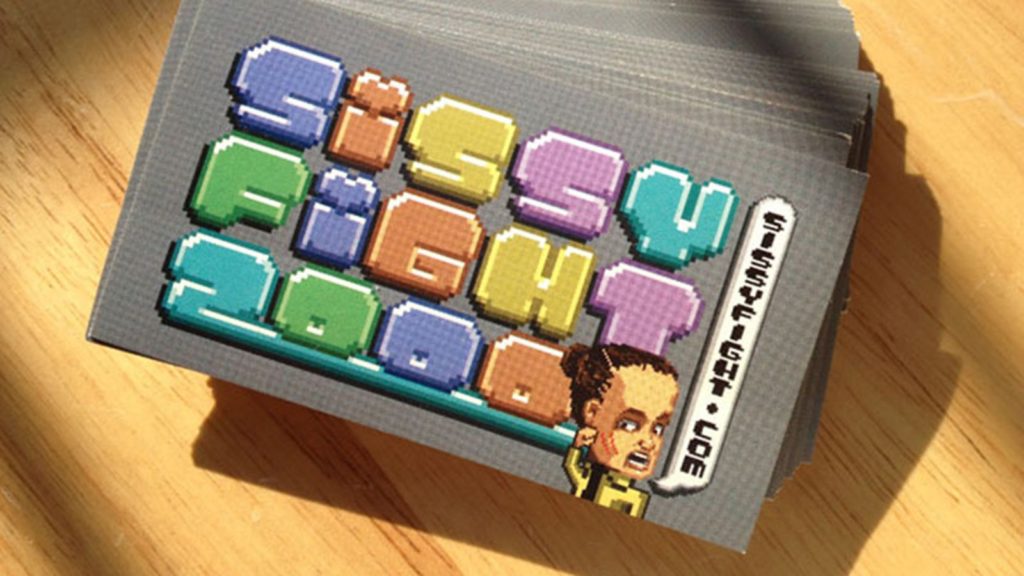
With a theme of ‘artists vying for attention in the art world’ we added a steal mechanic. The steal mechanic would allow the attacking player to gain the points the other player lost. We quickly found that this mechanic made the game go on infinitely.
We then changed our chosen mechanic to Favor. The Favor mechanic gave a single point to the player of our choosing. This mechanic was better balanced, and encouraged cooperative behavior.
Game of Games
The first elective I chose was Game of Games run by Marc LeBlanc. For the elective we created a system (we did a card game) with a single rule. Our rule had players first play two cards of the same suite. Then play another two cards which had to add up to the higher of the last played two cards. We then were instructed to merge our game with another.
Fortunately the merge was easy as the other game employed a rule that was similar to ours (it was another card constraint rule where the total of the two cards needed to add up to an odd number). We repeated this system merge process four times, until finally we had to merge sixteen different systems.
During this ‘ordeal’ the hardest part was merging a card based system with a dice based system. Our first attempt to tackle this merge was setting up two asymmetric games which were played simultaneously against each other, but this was not a satisfactory outcome.
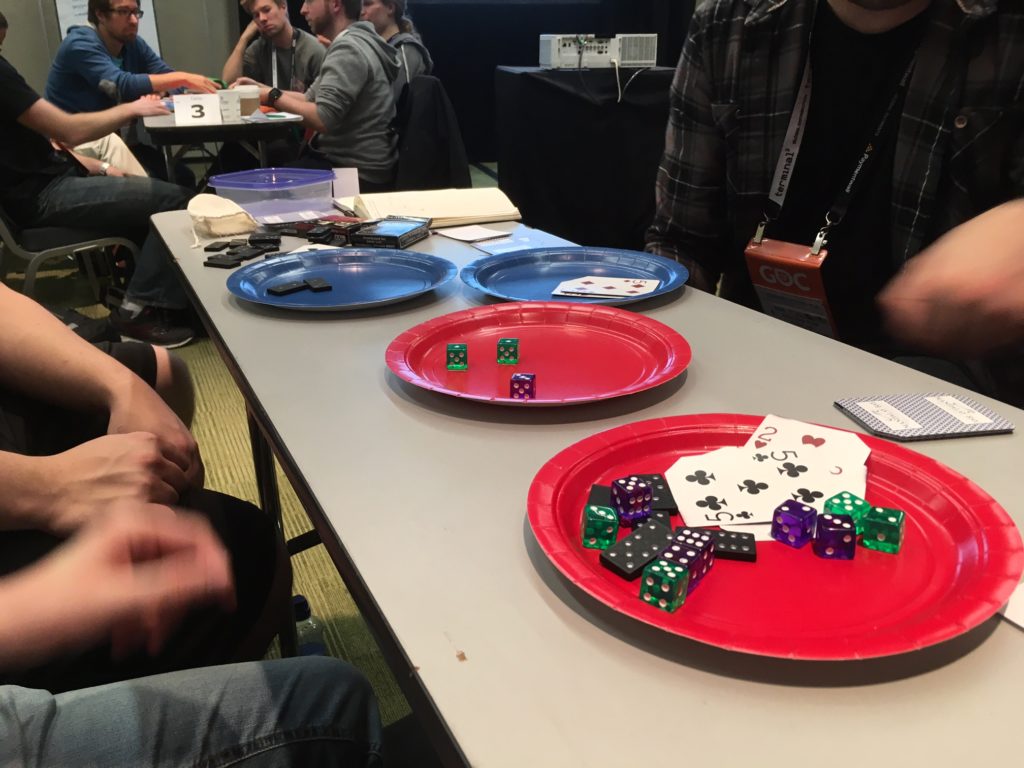
We continued to struggle until Marc LeBlanc allowed us to cut from the system during merging the only constraint being to keep the core components (the dominoes, dice, and cards). At that point we brainstormed and came up with a method of dealing with this which was to combine the system through a medium they all shared, which was numbers.
What we created was a game which involved matching numbers based on eleven dice that were initially rolled, and remained fixed throughout the game. Cards, and dominoes played sequentially, and had to get a pair of numbers that matched the dice’s number to be able to claim it. The winner claimed six out of eleven available dice.
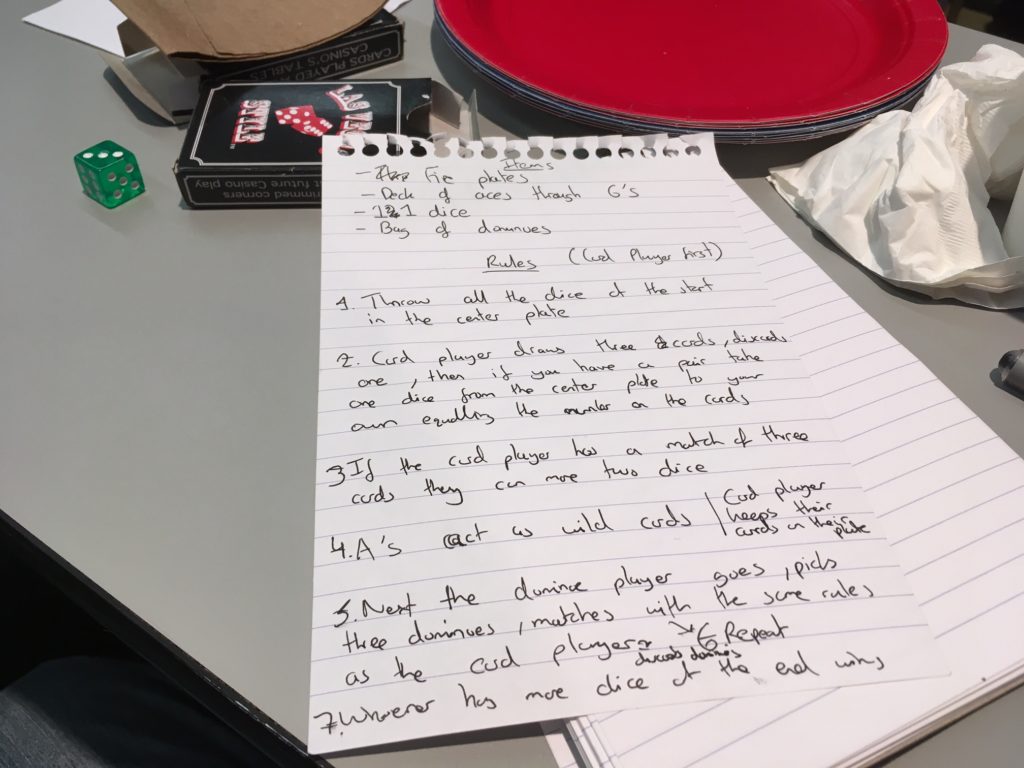
By the end of the workshop Marc LeBlanc introduced the MDA Framework, an awesome way of design a game.
Day 2
Mega Man
The next day of the workshop involved creating a paper prototype that tried to capture a games gameplay. My team chose to recreate Mega Man.
First we decided on the core of the game by choosing between three emotions that captured it. We chose ‘Overcoming Challenge’ as our emotion. Next we found actions that represented one of those three emotions.
We then broke down those actions into primitive actions e.g. fight enemy, jump, shoot. With these actions in mind we went about creating a game.
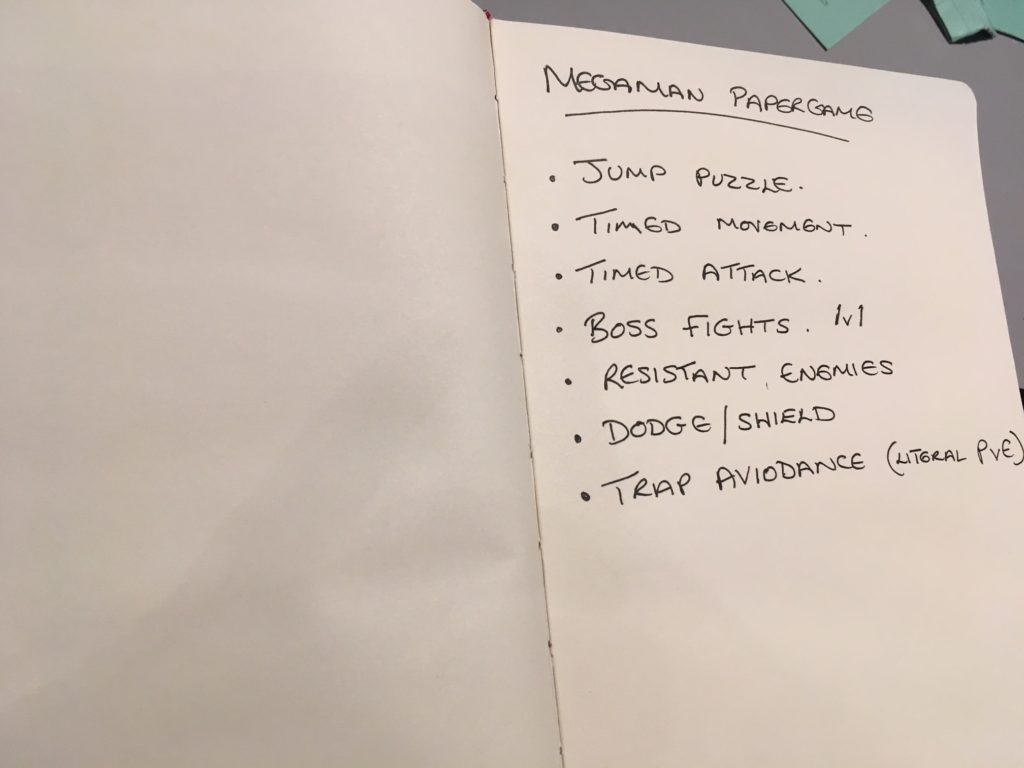
Originally we used dice, and modifiers to capture attacking enemies to progress through a level. On further consideration though we removed the dice because we believed Mega Man was in essence learning through trial and error with little randomness involved (at least in the first game).
We then introduced action cards, and obstacle cards. Action cards were selected by the player to solve randomly presented obstacle cards. To complement this system we introduced a randomly generated level deck. Level decks were generated randomly adding four obstacle cards, two enemy cards, then finally a boss card.
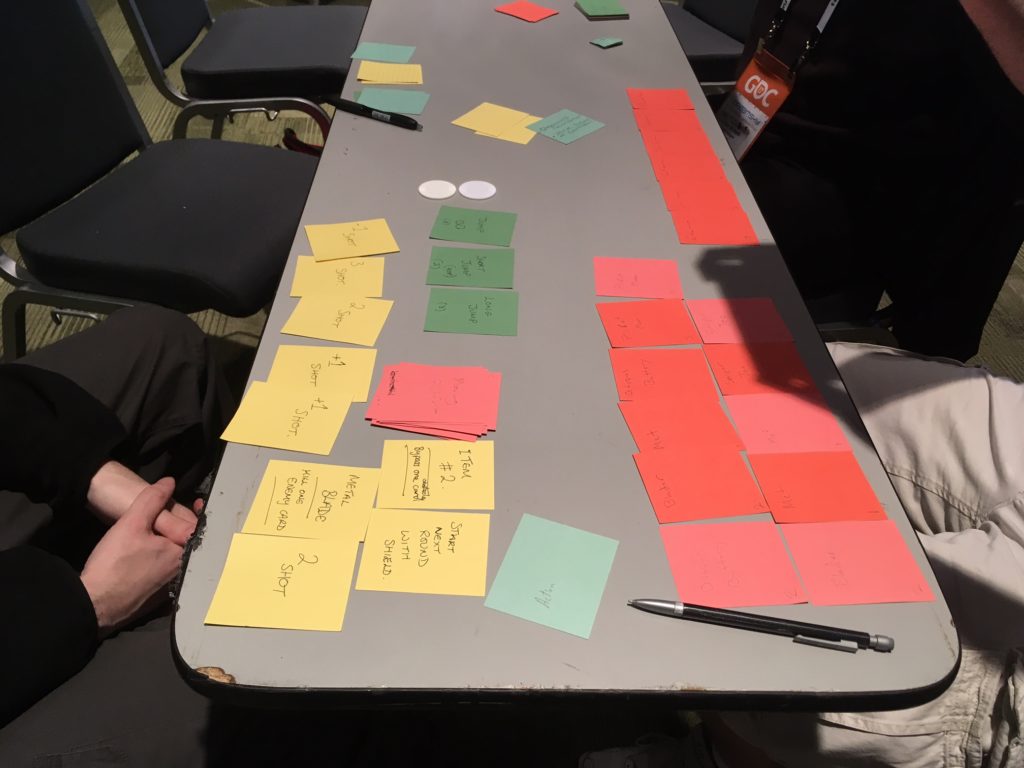
Next we added an ammo system to allow the player to deal with enemies in the level deck.
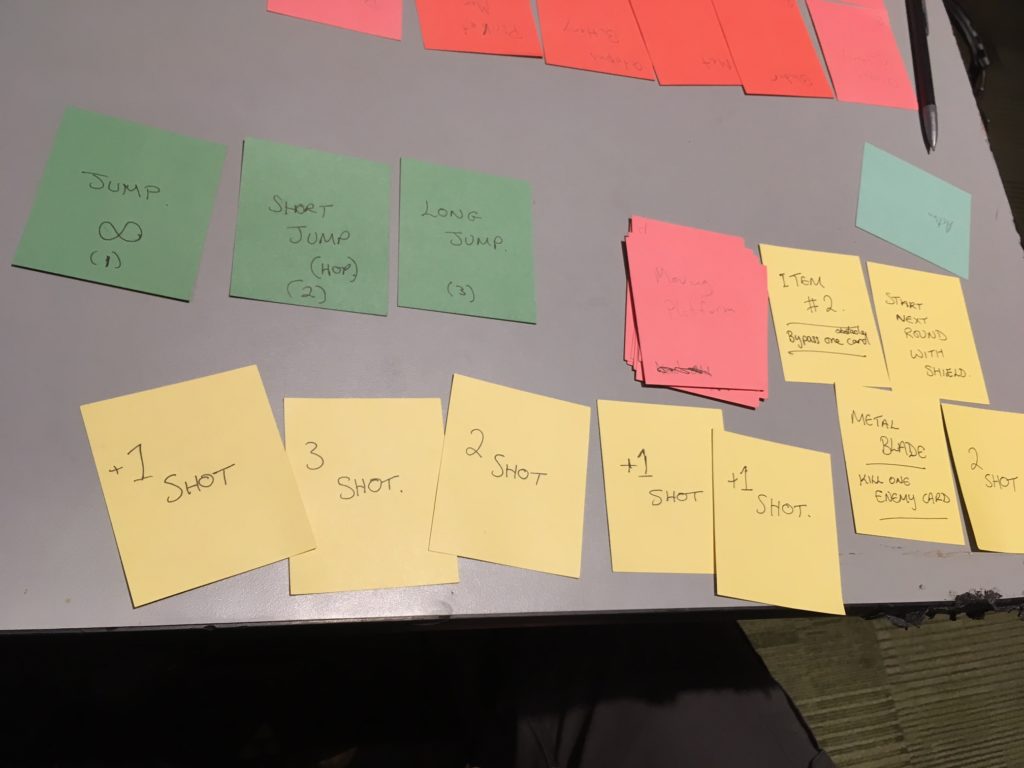
Playtesting the game found that players learned these level decks through trial and error, eventually succeeding. In this way we believed they did overcome challenge. On further playtesting we made a number of improvements:
- We made action cards infinite which reinforced the idea of making a judgement call which was more in line with Mega Man
- Adding labels on our cards to make them easier for players to know what was what
- Initially reward cards were visible for players to see, but we turned them upside down based off the advice of Stone Librande to make it more exciting
- The Boss was initially shuffled into the level deck. but we had issues where the boss kept appearing at the beginning of the level. This made the level less exciting because the anticipation of the boss at the end was gone. Therefore we decided to remove the boss from the shuffling process, and have it always appear at the end of the level deck
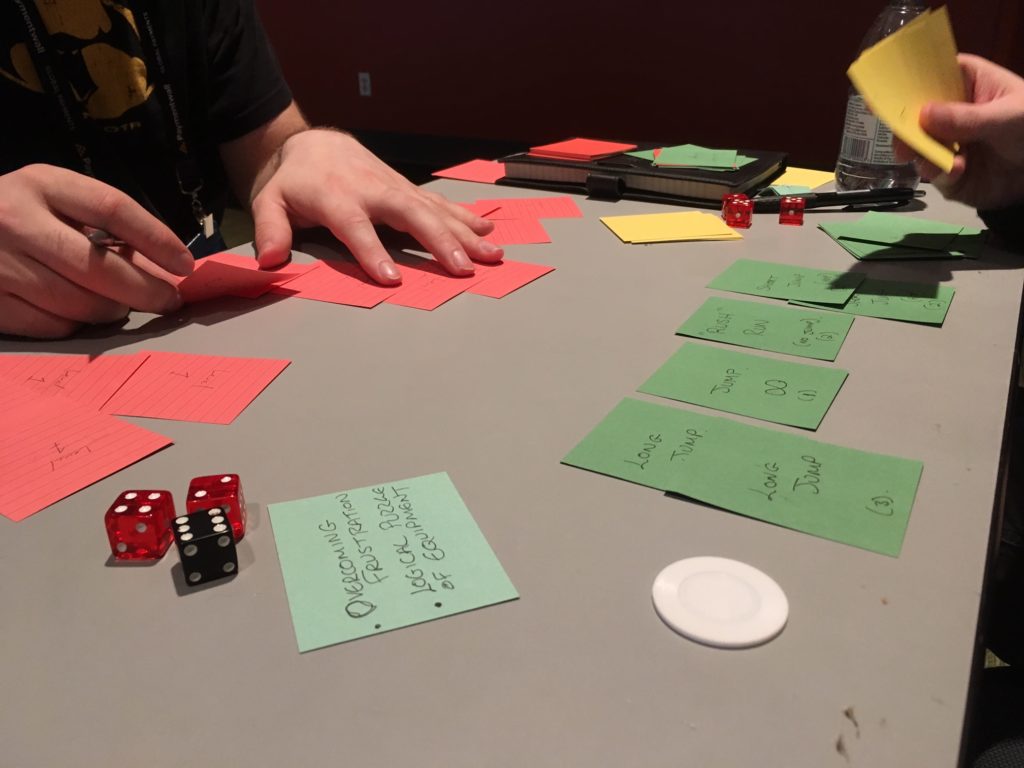
Horns of Dilemma
Horns of a Dilemma was a workshop elective run by Eric Todd. The purpose of it was to introduce us to creating moral dilemmas within games, which is a really REALLY hard.
At first we were required to play a game called Country Doctor which had us rolling dice to administer treatments to a sequence of patients. The patient at the end of the sequence was our ‘wife’ who if died resulted in losing the game.
The next step was to modify the game. My team added an element of improvisation to the game which we believed would add greater moral weight to the doctors actions as the improvisers would react to what the player did in the game.